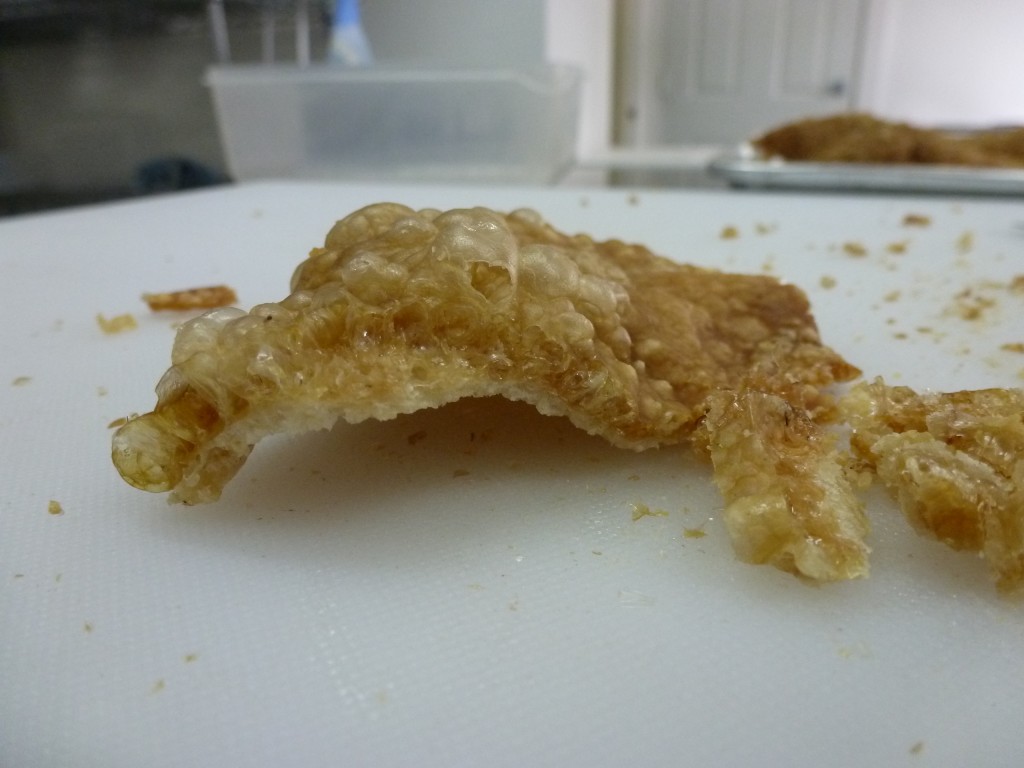 Crackling is pig skin, cooked so that it’s crisp. Since skin contains, and is often adjacent to, a good deal of fat, it benefits from a long, slow, rendering process, followed by a quick, high-heat crisping process.
Crackling is pig skin, cooked so that it’s crisp. Since skin contains, and is often adjacent to, a good deal of fat, it benefits from a long, slow, rendering process, followed by a quick, high-heat crisping process.
You can form perfectly good crackling while cooking a skin-on pork roast, so long as the meat beneath the skin is a cut that also benefits from a long, slow cook. Pork head, shoulder, and hock come to mind. After the slow cook, raise the oven temperature to 425°F and bake until the skin becomes brittle, almost glass-like.
You can also cut the skin from the meat, then render and crisp it on its own. This yields a product more like commercial pork rinds, delicate and puffy.
I typically remove the skin from the lean cuts of pork like the loin and leg. I try to cut as close to the skin as possible, but there might be as much as 1/4″ of subcutaneous fat left on the skin. Sometimes there is a blue stamp on the skin from when the pig passed inspection at the abattoir. These stamps are made of edible ink, but I cut them away because, well, they’re blue. Also, any hair remaining on the skin should be singed or shaved.
You can season crackling after it’s cooked, but the salt will not adhere well, and will be unevenly dispersed. It’s best to season the skin before any cooking takes place. Sprinkle kosher salt on both sides of the skin, then cover and refrigerate for a few days. Some sources say that salting the skin in this manner, then soaking the skin in water overnight will draw out some of the smelly oils in the skin.
Next we need to render the fat. This requires long, gentle cooking. I submerge the skin in lard and hold it in a 250°F oven for at least 2 hours. The skin will still be soft. At this point I trim any subcutaneous fat off the underside.
Next we crispify the rendered skin. Place the skin on a wire rack and bake in a 350°F oven until puffy and brittle. It’s important to make sure all parts of the skin are crisp. Any part that doesn’t clink when tapped with a knife will be chewy and more or less inedible. The baking imparts a distinct flavour reminiscent of puffed wheat.
I once tried to temper this flavour by deep-frying the rendered skin in lard. I thought this was a great idea, as I know that that is how commercial pork rinds are made. Turns out it’s actually a terrible idea. Do not do this. As pork skin crisps, it releases air, often with dramatic, audible pops. This is relatively harmless during baking, but during deep-frying it sends grease flying all over the stove and beyond. Luckily I was on the other side of the kitchen when this started. I had to hold a large stock pot lid as a shield against the volleys of hot grease as I approached the stove and removed the skin from the pot.
So yeah. Bake the skin.
Consume with beer, or possibly cider.
